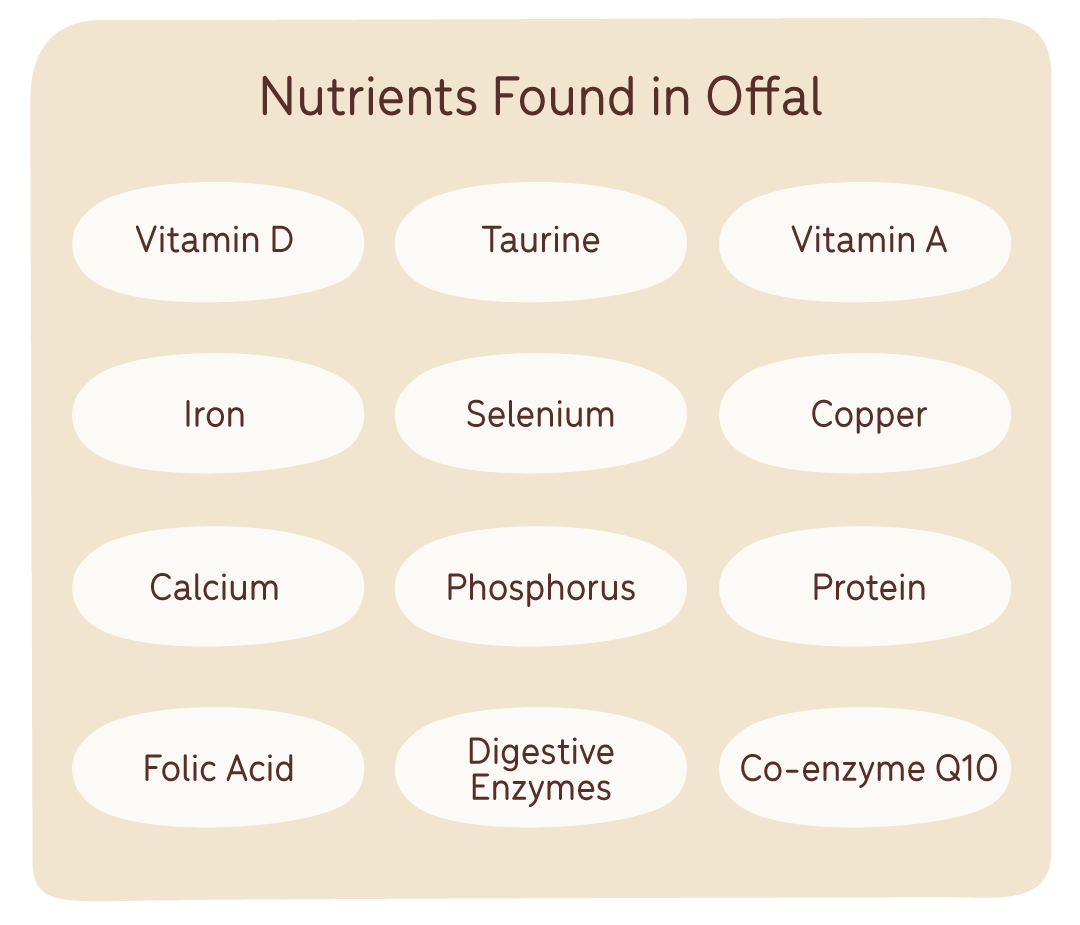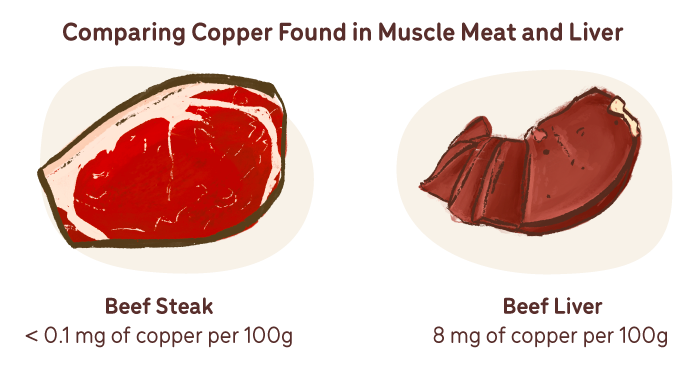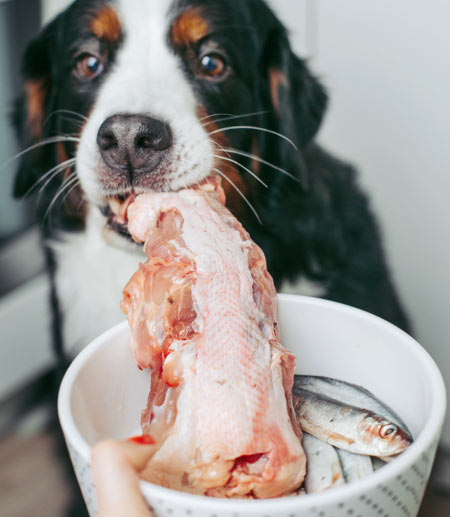Why is offal important for pets?


Offal refers to the organs and any offcut or part of an animal that is discarded when butchered, but there are important differences within this broad category. In raw pet diets “offal” often usually refers to a combination of the secreting organs like liver and kidney, non-secreting organs like heart, gizzards, lungs or tripe, or other edible components like trachea, necks, frames (including of fish) and other bones.
So what’s the big deal; why is offal so important for pets? It’s basically scraps!
Well, while it’s sufficient for us to consistently eat meals of, say, meat, rice and a few veggies, that’s because this is what a balanced diet looks like for humans. And while this globally popular combo nourishes us with a good balance of protein, carbohydrates, fats, vitamins and minerals, there are things that set us apart from dogs and cats, making it nutritionally inadequate for them. The addition of organ meat (ideally in place of the rice!) fills out the canine or feline diet, filling problematic nutritional gaps and adding important nutritional variety, so your pet can thrive, not just survive.

One of the key differences that makes offal more important for dogs and cats than for humans is our ability to synthesise vitamin D3 from sunlight, which means we have little need for it from our food. Dogs and cats lack this nifty skill, meaning that liver or brain makes an excellent addition to the diet for a hit of vitamin D, as does salmon, which may come in the affordable form of frames or belly offcuts. Our ability to synthesise taurine and convert vitamin A from beta carotene means we can sustain our eye health on carrots alone, whereas cats need plenty of dietary sources, like liver and heart. Growing animals in particular have higher requirements for nutrients like iron, selenium and copper than we do, which are far more abundant in organ meats than other dietary sources. As a result, it can be difficult to supply these important minerals consistently and in adequate quantities without utilising these tasty morsels that we two-leggeds so often turn our noses up at.
Offal is particularly beneficial in the form of meaty bones when we look at the most abundant mineral in the body: calcium. This is because bones provide a highly bioavailable source of both calcium AND phosphorus, which are two minerals that must be kept in balance with one another. We can supplement calcium alone, but then often we’re left with insufficient phosphorus, which is especially problematic for growing animals. Having said that, if we are avoiding bones for some reason, offal like liver and heart are extremely phosphorus dense, so the solution to correct this imbalance is still more offal! And we can’t forget the star of this show: protein. It’s the most important macronutrient for dogs and cats, and it’s generally most abundant in the meat of the organs.

These nutrients and other important ones are available to an extent from muscle meat and other sources, but the density is often considerably lower. For example, beef liver contains 8mg of copper per 100g, whereas beef steak contains less than 0.1mg of copper per 100g. 100g of chicken breast contain 16mg of taurine, whereas 100g of chicken heart contains 112mg. Lamb sirloin contains 18mg of folic acid, whereas lamb kidney contains 28mg. These nutritious organs also contain things that aren’t plentiful in muscle meat, like the digestive enzymes and probiotics in tripe that promote gut health, and the co-enzyme Q10 in heart meat that (unsurprisingly) promotes heart health.

This is not to say that it’s impossible to feed a “balanced” diet without offal, but it usually comes at the expense of quality ingredients and organic nutrients from whole foods. We want our pets to not just get the bare minimum from their food for survival, but to thrive on the benefits of a diet as close to their ancestral diet as is practically possible. This means including a variety of different organs meats and offal that add nutritional robustness, without synthetic nutrient supplementation. It also means the diet is much closer to what a dog or cat would naturally consume, making it highly palatable, varied and never boring.
About the Author - Clare Kearney, Pet Nutritionist.

Clare Kearney is a pet nutritionist and writer based in Byron Bay, where she lives with her two kelpies, Tex Perkins and Pip. Clare takes a practical but science-based approach to nutrition and has a passion for fresh, whole foods for pets. She has run her consulting business HUNDE since 2015, and through it provides education about pet nutrition and the pet food industry, assisting those who wish to improve their pets’ lives through species appropriate, unprocessed foods. Clare believes that nutrition fundamentally underpins our health and that without fresh, healthy foods we can’t possibly be at our most vibrant. She sees no distinction between us and our animal companions in this respect. Her mission is to empower pet owners with information, so they can make the best possible choices for their whole family, and live long, happy and healthy lives together.
If you liked this article, sign up to our Big Dog Fam Mail to receive more great pet health and happiness advice.
If you liked this article, please share on Facebook.
